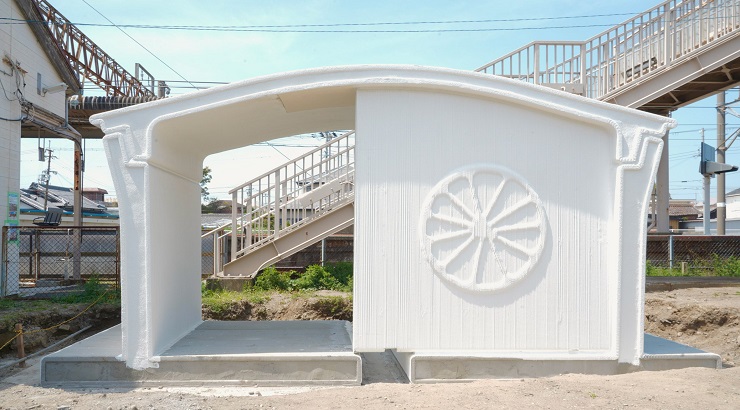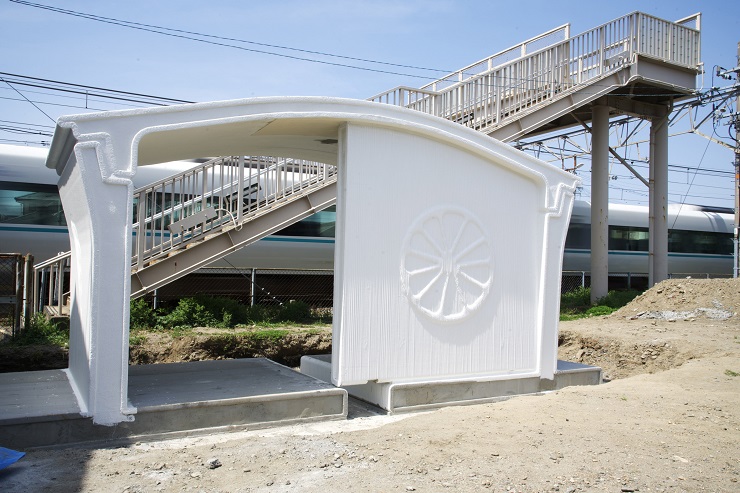Innovation
Japan Builds 3D-Printed Railway Station in 6 Hours
A conventional station would take two months to build and cost double.

In a groundbreaking achievement, Japan has completed construction of the world’s first 3D-printed railway station, assembling the structure in just under six hours.
The new station, located in the coastal town of Arida in Wakayama Prefecture, replaces an ageing wooden building at Hatsushima Station, originally built in 1948.
The Japan 3D printed train station was unveiled by West Japan Railway Company (JR West) in collaboration with construction technology firm Serendix and architecture studio Neuob.
The initiative marks a significant step forward in rapid, cost-efficient infrastructure development, particularly for rural areas with limited rail traffic.
“Normally, construction takes place over several months while the trains are not running every night,” said Serendix co-founder Kunihiro Handa. “But we were able to build this in a single night.”
The station, which serves around 530 daily passengers on a modest line running one to three trains per hour, now boasts a sleek, prefabricated shelter covering just over 100 square feet.
The building comprises four 3D-printed components—roof, back wall, and two curved side elements—that were printed over seven days in a factory in Kumamoto Prefecture, nearly 800 kilometres away.
RELATED: AI-Powered Robot Builds House in Just 24 Hours
The printed elements were reinforced with concrete and rebar before being trucked to the site. Upon arrival on the night of March 24, construction teams worked through a narrow six-hour window between train services.
After the final train departed at 11:57 pm, cranes lifted the segments into place, completing assembly by 5:45 am—just in time for the first train of the morning.
“Rounded designs are costly and difficult to achieve with concrete construction using formwork,” said Neuob founder Hiroshi Ota.

“We chose curved, soft shapes to take advantage of this benefit. Furthermore, to reflect local characteristics, we expressed the local specialities—mandarin oranges and cutlassfish—in relief, which is another feature uniquely possible with 3D printing.”
JR West President Ryo Kawamoto highlighted the efficiency gains: “We believe that the significance of this project lies in the fact that the total number of people required will be reduced greatly.”
RELATED: 7 of the World’s Most Famous 3D-Printed Homes
Though structurally complete, the Japan 3D printed railway station will undergo final touches, including installation of ticketing machines and IC card readers.
It is expected to open to passengers in July.
Serendix said a similar station would take two months to build and cost twice as much, adding that the method could help tackle Japan’s construction labour shortage.
“This speed enables more affordable and numerous station constructions,” it noted.
With Hatsushima Station as a model, JR West and Serendix are now eyeing broader use of 3D printing for transport infrastructure across the country.














